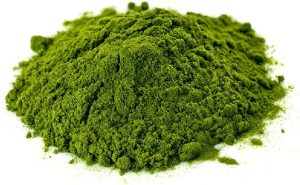
- Overview of Sulfur
- Brief History of Sulfur
- Functions of Sulfur
- Recommended Daily Intake (RDI), Recommended Dietary Allowance (RDA), Adequate Intake (AI), or Reference Nutrient Intake (RNI) for Sulfur
- Deficiency of Sulfur
- Food Sources of Sulfur and Where to Get It From
- Sulfur and Its Interaction with Other Medications
- Websites to Probe Into for Information on Sulfur
- Disclaimer
Overview of Sulfur
Sulfur is an essential element in the human body, playing integral roles in various physiological functions. It is not typically administered as a standalone medicine; however, sulfur compounds are crucial in medical applications. Sulfur-containing drugs, known for their antibacterial and antifungal properties, are employed in the treatment of various infections. Sulfur is also a key component of coenzymes and vitamins, contributing to essential metabolic processes. Additionally, it forms an integral part of amino acids such as cysteine and methionine, both crucial for protein synthesis. The diverse roles of sulfur highlight its significance in maintaining health and its indirect contributions to therapeutic interventions in the field of medicine.
In medicine, sulfur’s historical use includes sulfur-rich compounds like sulfonamides, which have served as antibiotics, contributing to the arsenal of treatments for bacterial infections. The multifaceted involvement of sulfur underscores its importance, not only in foundational biological processes but also in the development of pharmaceutical interventions that benefit human health.
Brief History of Sulfur
Sulfur has a rich history in medicine, dating back to ancient civilizations. Here is a brief overview of the historical uses of sulfur in medicine:
- Ancient Civilizations:
- Ancient cultures, including the Egyptians, Greeks, and Romans, recognized the therapeutic properties of sulfur. Sulfur-containing minerals, such as sulfur springs and volcanic deposits, were utilized for various medicinal purposes.
- Sulfur as a Topical Treatment:
- Sulfur was commonly used topically to treat skin conditions. Ancient physicians prescribed sulfur-containing ointments and baths for ailments like skin infections, dermatitis, and certain parasitic infestations.
- Middle Ages:
- During the Middle Ages, sulfur gained popularity as a treatment for various ailments, including skin disorders and respiratory conditions. Sulfur-rich substances, such as brimstone, were used for fumigation to combat infectious diseases.
- Sulfur in Traditional Medicine:
- Traditional medicinal systems, including Ayurveda and Traditional Chinese Medicine, incorporated sulfur for its perceived healing properties. It was believed to have detoxifying and purifying effects on the body.
- Sulfonamides and Antibiotics (20th Century):
- The 20th century saw a significant milestone with the development of sulfonamide drugs, the first synthetic antibiotics. Sulfonamides revolutionized the treatment of bacterial infections, providing a more targeted and effective approach.
- Modern Dermatology:
- Sulfur continues to be used in modern dermatology for its keratolytic and antimicrobial properties. It is found in various topical formulations for treating conditions such as acne, seborrheic dermatitis, and psoriasis.
| Period | Development and Use of Sulfur |
|---|---|
| Ancient Civilizations | Ancient cultures, including the Egyptians, Greeks, and Romans, recognized the therapeutic properties of sulfur. Sulfur-containing minerals, such as sulfur springs and volcanic deposits, were utilized for various medicinal purposes. |
| Sulfur as a Topical Treatment | Sulfur was commonly used topically to treat skin conditions. Ancient physicians prescribed sulfur-containing ointments and baths for ailments like skin infections, dermatitis, and certain parasitic infestations. |
| Middle Ages | During the Middle Ages, sulfur gained popularity as a treatment for various ailments, including skin disorders and respiratory conditions. Sulfur-rich substances, such as brimstone, were used for fumigation to combat infectious diseases. |
| Sulfur in Traditional Medicine | Traditional medicinal systems, including Ayurveda and Traditional Chinese Medicine, incorporated sulfur for its perceived healing properties. It was believed to have detoxifying and purifying effects on the body. |
| Sulfonamides and Antibiotics (20th Century) | The 20th century saw a significant milestone with the development of sulfonamide drugs, the first synthetic antibiotics. Sulfonamides revolutionized the treatment of bacterial infections, providing a more targeted and effective approach. |
| Modern Dermatology | Sulfur continues to be used in modern dermatology for its keratolytic and antimicrobial properties. It is found in various topical formulations for treating conditions such as acne, seborrheic dermatitis, and psoriasis. |
While sulfur itself is not administered directly as a medicine, its compounds and derivatives have played pivotal roles in shaping the history of medicine. From ancient remedies to the development of synthetic antibiotics, sulfur’s contributions have been diverse and enduring in the field of healthcare.
Functions of Sulfur
Sulfur plays essential roles in medicine, contributing to various physiological functions and therapeutic applications. Some key functions of sulfur in medicine include:
- Antibacterial and Antifungal Properties:
- Sulfur-containing compounds, such as sulfonamides and antibiotics like sulfamethoxazole, have potent antibacterial properties. They inhibit the growth of bacteria by interfering with essential metabolic processes.
- Skin Disorders Treatment:
- Sulfur is used in dermatology for the treatment of various skin conditions. Topical formulations containing sulfur are employed to address acne, seborrheic dermatitis, and other inflammatory skin disorders.
- Wound Healing:
- Sulfur has been historically applied to wounds for its antiseptic properties, promoting healing and preventing infections.
- Anti-Inflammatory Effects:
- Sulfur compounds can exhibit anti-inflammatory effects, making them useful in treating inflammatory conditions, including certain skin disorders and joint inflammations.
- Formation of Amino Acids:
- Sulfur is a crucial component of amino acids, particularly cysteine and methionine. These amino acids are essential for protein synthesis, supporting the formation and maintenance of structural proteins in the body.
- Detoxification Processes:
- Sulfur participates in detoxification processes within the body, aiding in the removal of toxins and waste products. This is particularly relevant in the liver, where sulfur-containing compounds assist in detoxifying harmful substances.
- Collagen Formation:
- Sulfur is involved in the cross-linking of collagen fibers, contributing to the structural integrity of connective tissues such as skin, cartilage, and tendons.
- Metabolic Processes:
- Sulfur is integral to various metabolic pathways, including the synthesis of vitamins, coenzymes, and other essential biomolecules. It plays a role in maintaining cellular functions and overall metabolic balance.
- Respiratory Conditions:
- Inhaled sulfur compounds, such as hydrogen sulfide, have been explored for their potential therapeutic effects on respiratory conditions. However, the inhalation of sulfur compounds requires careful consideration due to potential toxic effects.
While sulfur itself is not administered as a standalone medicine, its incorporation into various therapeutic agents and its role in essential physiological functions highlight its significance in medical applications. Sulfur compounds continue to be an area of interest in medical research and the development of pharmaceutical interventions.
Recommended Daily Intake (RDI), Recommended Dietary Allowance (RDA), Adequate Intake (AI), or Reference Nutrient Intake (RNI) for Sulfur
Sulfur does not have established Recommended Dietary Allowances (RDAs), Adequate Intakes (AIs), or Reference Nutrient Intakes (RNIs) like some other essential nutrients. This is because sulfur is primarily obtained through dietary proteins that contain sulfur-containing amino acids, such as cysteine and methionine. These amino acids are crucial for protein synthesis and are found in various protein-rich foods.
Sulfur is not typically listed as a nutrient with specific daily intake recommendations due to its widespread presence in many foods. The emphasis is usually on consuming a balanced diet that includes an adequate amount of protein from diverse sources.
It’s important to note that individual sulfur requirements can vary based on factors such as age, sex, health status, and dietary choices. Consulting with a healthcare professional or a registered dietitian can provide personalized advice on dietary sulfur intake based on individual needs and health conditions.
Deficiency of Sulfur
Sulfur deficiency in humans is rare because sulfur is obtained from various dietary sources, primarily from sulfur-containing amino acids found in proteins. However, if there is an insufficient intake of protein or a lack of diversity in the diet, it could potentially lead to inadequate sulfur intake.
A deficiency of sulfur may manifest in various ways, including:
- Reduced Protein Synthesis:
- Sulfur is essential for the synthesis of sulfur-containing amino acids like cysteine and methionine. Insufficient sulfur can lead to a decline in the production of these amino acids, affecting protein synthesis.
- Impaired Connective Tissues:
- Sulfur is involved in the cross-linking of collagen, a crucial protein for the structural integrity of connective tissues. A deficiency might impact the strength and flexibility of tissues like skin, tendons, and cartilage.
- Joint and Muscle Issues:
- Sulfur is associated with joint health, and a deficiency might contribute to joint problems. Some individuals report improvements in joint pain when sulfur-rich compounds are included in their diets.
- Reduced Detoxification:
- Sulfur compounds play a role in detoxification processes, particularly in the liver. A deficiency might affect the body’s ability to eliminate toxins efficiently.
- Skin Disorders:
- Sulfur deficiency may be associated with certain skin disorders. Topical applications of sulfur have historically been used for skin conditions, and a lack of sulfur might impact skin health.
It’s important to note that sulfur deficiency is uncommon, and dietary sources of protein, which contain sulfur, are widely available. Foods rich in sulfur include eggs, meat, fish, poultry, dairy products, legumes, nuts, and certain vegetables like garlic, onions, and cruciferous vegetables.
If someone suspects a sulfur deficiency or is experiencing symptoms related to sulfur inadequacy, it’s advisable to consult with a healthcare professional or a registered dietitian. They can assess dietary habits, recommend appropriate dietary changes, and provide guidance on maintaining a well-balanced and nutritious diet.
Food Sources of Sulfur and Where to Get It From
Sulfur is obtained through dietary sources, primarily from sulfur-containing amino acids found in protein-rich foods. Here are some common food sources of sulfur:
- Protein-Rich Foods:
- Examples: Meat (beef, pork, lamb), poultry (chicken, turkey), fish, eggs, and dairy products.
- How to Include: Incorporate a variety of protein sources into your diet, such as lean meats, fish, eggs, and dairy products.
- Legumes:
- Examples: Beans (especially soybeans), lentils, chickpeas, and peas.
- How to Include: Use legumes in salads, soups, stews, and side dishes for a plant-based source of protein.
- Nuts and Seeds:
- Examples: Almonds, walnuts, sunflower seeds, and chia seeds.
- How to Include: Snack on nuts, sprinkle seeds on yogurt or salads, or incorporate them into baked goods.
- Cruciferous Vegetables:
- Examples: Broccoli, cauliflower, Brussels sprouts, kale, and cabbage.
- How to Include: Steam, roast, or stir-fry cruciferous vegetables as side dishes or main components of meals.
- Allium Vegetables:
- Examples: Garlic, onions, leeks, and shallots.
- How to Include: Use garlic and onions in various savory dishes for flavor enhancement.
- Dairy Products:
- Examples: Milk, cheese, and yogurt.
- How to Include: Consume dairy products as part of a balanced diet, choosing low-fat or fat-free options if desired.
- Seafood:
- Examples: Fish and shellfish.
- How to Include: Enjoy a variety of fish dishes, such as grilled salmon or shrimp stir-fry.
- Whole Grains:
- Examples: Quinoa, oats, and whole wheat.
- How to Include: Choose whole grains for meals like breakfast cereals, quinoa salads, or whole grain bread.
- Soy Products:
- Examples: Tofu, tempeh, and edamame.
- How to Include: Incorporate soy products into vegetarian dishes, stir-fries, or salads.
- Certain Fruits:
- Examples: Watermelon, bananas, and oranges.
- How to Include: Include a variety of fruits in your diet for overall nutritional benefits.
Maintaining a well-balanced and varied diet that includes a mix of these sulfur-containing foods can help ensure an adequate intake of sulfur. If there are specific dietary restrictions or concerns, it’s advisable to consult with a healthcare professional or a registered dietitian for personalized guidance.
Sulfur and Its Interaction with Other Medications
Sulfur itself, as an elemental substance, does not typically interact with medications in the same way that certain drugs or compounds might. However, sulfur-containing drugs or medications with sulfur components may interact with other substances or medications.
- Sulfonamide Antibiotics:
- Sulfonamide antibiotics, such as sulfamethoxazole, are a class of medications that contain sulfur. These drugs may interact with certain medications, including anticoagulants (blood thinners), diuretics, and drugs that affect blood sugar levels.
- Sulfur in Topical Preparations:
- Topical medications containing sulfur, often used in dermatology for conditions like acne and skin infections, may have interactions with other topical treatments. It’s important to inform healthcare providers about all medications, including topical products, being used.
- Sulfur and Lithium:
- There is some evidence that sulfur supplements may affect the absorption and excretion of lithium, a medication used to treat bipolar disorder. Individuals taking lithium should discuss sulfur supplementation with their healthcare provider.
- Sulfur and Selenium Interaction:
- Sulfur and selenium are both essential elements, and imbalances in their levels may affect each other. Some medications may contain selenium, and interactions could occur with sulfur-containing compounds.
It’s crucial for individuals to inform their healthcare providers about all medications, supplements, and topical treatments they are using. This includes disclosing the use of sulfur-containing drugs, over-the-counter products, or dietary supplements. Healthcare professionals can assess potential interactions and make appropriate recommendations based on an individual’s health status and medication regimen.
As with any health-related concerns, it’s advisable for individuals to consult with their healthcare providers for personalized advice and to address any specific questions regarding medication interactions involving sulfur.
Websites to Probe Into for Information on Sulfur
Here’s a brief overview of sulfur and some information from the provided websites:
- WebMD – Sulfur:
- WebMD – Sulfur provides general information about sulfur, its uses, potential benefits, and safety considerations.
- Mayo Clinic – Sulfur Topical Route:
- The Mayo Clinic – Sulfur Topical Route page offers guidance on the proper use of sulfur in topical applications, including dosage and precautions.
- Wikipedia – Sulfur in Pharmacy:
- The Wikipedia – Sulfur in Pharmacy entry provides an overview of sulfur’s historical and contemporary use in pharmacy and medicinal applications.
- Verywell Health – Sulfur: What Should I Know About It:
- Verywell Health – Sulfur provides information on sulfur, its uses, potential side effects, and considerations for use.
- RxList – Sulfur:
- RxList – Sulfur offers details on sulfur supplements, their uses, and potential interactions with other substances.
- Mount Sinai Health Library – Sulfur:
- Mount Sinai – Sulfur provides information on sulfur supplements, their uses, and potential health benefits.
- Healthline – Sulfur for Acne:
- Healthline – Sulfur for Acne discusses the use of sulfur in skincare, particularly for acne treatment, and provides information on its effectiveness.
- AAAAI – Sulfite and Sulfa Drugs:
- AAAAI – Sulfite and Sulfa Drugs explains the differences between sulfites and sulfa drugs, addressing potential allergic reactions.
- Britannica – Sulfa Drug:
- Britannica – Sulfa Drug provides an overview of sulfa drugs, including their history, development, and medical uses.
Please note that information from external websites should be verified with healthcare professionals for accuracy and applicability to individual health conditions.
Disclaimer
The information is solely provided for educational purposes. It is not intended to diagnose, treat, cure, or prevent any disease. Seek the advice of your physician or qualified healthcare provider with any questions you may have regarding a medical condition at all times. Never disregard professional medical advice because of something you have read or learned from this article.






